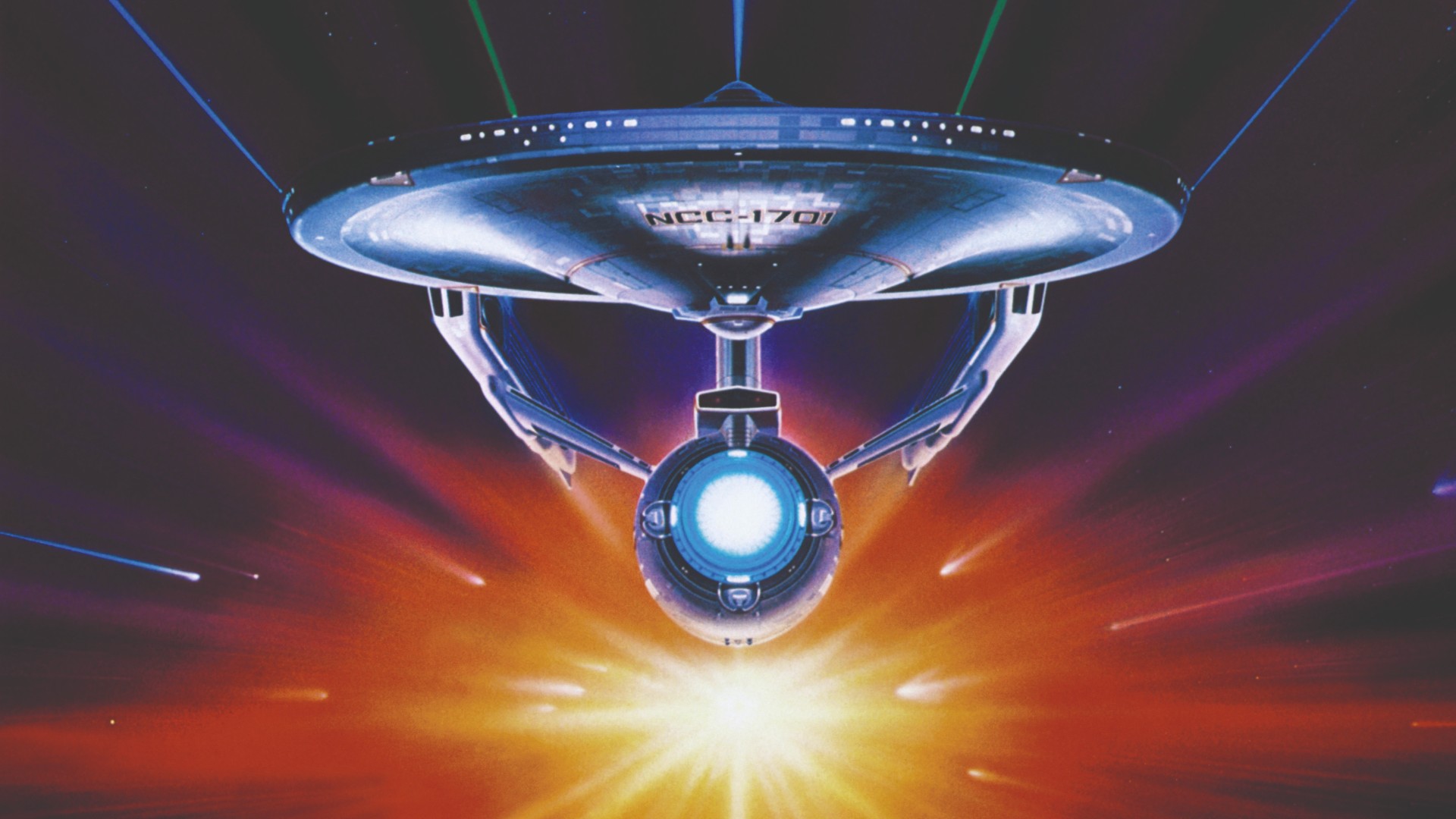Could we really build Star Trek's USS Enterprise?
Just how close are scientists to building Star Trek’s U.S.S. Enterprise?

Launched into space from the mind of creator Gene Roddenberry in the 1960s, the U.S.S Enterprise NCC-1701 was the very first Star Trek spacecraft to reach warp speed on television screens around the world. The time-travelling, ultra-fast and near-invisible "Constitution-class" starship was the most advanced spacecraft at the time of its launch in 2245.
Built-in space, the U.S.S Enterprise was a feat of fictional engineering. It’s estimated that the spacecraft would weigh around more than four million tonnes in weight and house a crew of 430. In comparison, the heaviest man-made object to venture into space is the International Space Station (ISS), which has a mass of around 419 tonnes. However, China is reportedly researching the possibility of constructing a colossal spacecraft measuring up to 0.6 miles (0.96km) in length, the ISS is only 360 feet (110 meters) long.
Engineers still have 233 years until humankind reaches Roddenberry’s vision for space exploration and several scientific breakthroughs suggest that we might be heading towards a spaceship that’s reminiscent of the U.S.S. Enterprise.
As a Constitution-class Starfleet Federation starship, the main role of the Enterprise was to venture on intergalactic exploration and diplomatic missions. To assist them on their journeys of discovery, the Enterprise was equipped with an array of advanced scanners and sensors. Before descending upon foreign land, the crew aboard the Enterprise firstly flipped a few stitches and scanned the planet below for signs of life. It’s a pretty handy gadget to have when discovering new life, but one that seems unrealistic. However, scientists are one step closer to making the technology a reality.
Researchers have discovered that the biochemistry of all life forms interact with light in a way that inorganic or artificial materials don’t. For example, when light hits long chains of carbon molecules that make up amino acids (the building blocks of proteins) it becomes circulatory polarized. This means it travels in either clockwise or anticlockwise spirals. Scientists could theoretically observe and identify this light interaction in the hopes of discovering new life forms from observatories of spacecraft, such as novel Enterprise or from future space-based telescopes, such as the Large UV Optical Infrared Surveyor (LUVOIR).
Travelling faster than the speed of light
One of the most iconic abilities of the Enterprise is its ability to zip from one end of the galaxy to the next in mere moments, using its fictitious warp drive. Currently, humankind is nowhere near advanced enough to replicate the Enterprise’s warp drive. However, the theory behind building one has been around since the early 1990s.
To achieve speeds faster than the speed of light, physics’ natural speed limit, theoretical physicist Miguel Alcubierre proposed that we must bend the fabric of space-time. Space-time can be imagined as a sheet of rubber on which all matter sits, creating dips in the rubber relative to their mass.
Breaking space news, the latest updates on rocket launches, skywatching events and more!
Alcubierre proposed that if space-time could be folded in front of a spaceship and then expanded behind it, the ship could travel much faster than the speed of light and achieve "warp speed". This bending of space-time would theoretically continue to move in a wave and act as a conveyor belt carrying the spaceship along it.
To achieve such space-time manipulation, Alcubierre suggested that an enormous amount of negative mass, a phenomenon rarely created in laboratories and seen as vacuum energy in space. The amount of negative mass needed to facilitate Alcubierre’s warp drive would have to be equivalent to the mass of a massive star distributed in a ring around a spacecraft. This hypothetical ring of negative mass would create a "warp bubble" which would distort space-time and transport any spacecraft within it.
Although Alcubierre’s theory required negative mass, recent research out of Göttingen University, Germany, offers a new area of physics for researchers to explore potentials for warp power. In 2021, Physicist Erik Lentz hypothesised that positive mass and energy could also provide the necessary requirements to construct a warp bubble. Instead of a solid ring of negative mass detailed in Alcubierre’s theory, Lentz proposes that layering rings and risks of extremely dense fluid, similar to the composition of a neutron star’s interior, would yield the same result.
With the ability to bend space-time, those inside of the warp bubble could travel through space faster than the speed of light without breaking any physical laws. For example, much like the ability to walk freely in the belly of an airplane, the warp bubble would theoretically also allow a spaceship and its crew to move around without feeling the effects of warp speed.
There are several questions that remain unanswered about building a real-life warp capable vessel, such as how to control it’s direction and distance, as well as how do you exit a warp bubble?
In Star Trek, however, to fuel their warp drive and create enough energy to bend space-time, the U.S.S Enterprise uses the annihilation reaction between matter, in the form of deuterium (a real-world isotope of hydrogen), and antimatter, which is regulated by a fictional crystal called dilithium. The “electro-plasma” energy released from this reaction creates the necessary warp bubble to manipulate space-time and move.
The biggest hurdle to overcome in using annihilation reactions for energy is producing enough antimatter to power a warp drive.

As the name suggests antimatter is a mirrored and opposing version of matter, for example, an electron has a negative charge so its antimatter partner has the same mass but an opposite positive charge, called a positron. In order to create antimatter, particle accelerators, such as the Large Hadron Collider, which fire particles at one another to release antimatter.
However, there are several physical issues with antimatter as a fuel source. First, the yield of its production is very low. For example, the Fermi National Accelerator Laboratory (Fermilab) can only produce enough antimatter in an hour to power 1/1000 of a watt and therefore 100,000 Fermilabs would be required to power a single light bulb. Due to the fact that antimatter annihilates when it comes in contact with matter, storing it is near impossible as everything is made up of matter.
Despites these quantum woes, research into antimatter spacecrafts is still in development. One of the latest advancements in antimatter propulsion, is NASA’s proposal for a space probe that will travel all the way to our stellar neighbourhood Proxima Centauri, using an annihilation accelerator. But until scientists can successfully mass produce and store antimatter, powering a spacecraft that resembles the Enterprise remains firmly in the realm of imagination.
Additional resources
Keep up with the all the latest Star Trek news on the official site. Or if you wanted to see how the different USS Enterprises Rank, check out this article by Popular Mechanics or this one by Gizmodo.
Bibliography
- Adam Mann: "Scientists are Building a Real Life Version of The Starship Enterprise's Life Scanner" LiveScience, 2019
- Circular Spectropolarimetric Sensing of Vegetation in the Field: Possibilities for the Remote Detection of Extraterrestrial Life
- International Space Station Facts and Figures
- Deceleration of Interstellar Spacecraft Utilising Antimatter
- Robert Gast "Star Trek's Warp Drive Leads to New Physics" Scientific American, 2021
- https://www.uni-goettingen.de/en/3240.html?id=6192
- Matt Williams "What is the Alcubierre 'warp' drive?" Phys.org, 2017
- Sarah Lewin; "Will Anti-Matter Engines Power the First Starships?" Space.com 2016
- Spacecraft in a ‘warp bubble’ could travel faster than light, claims physicist - Physics World
- Bill Andrews: "If Wormholes Really Existed Could We Travel Through Them?" The Verge, 2019
- "Deflector shield envisioned for Mars mission" NBC News
- "Measurements of galactic cosmic ray shielding with the CRaTER instrument" AGU
- "Needed: Materials for 24th Century", JOM 48 (6) (1996), pp. 14-16. Starships"
- "Spaceships Made of Plastic Could Carry Us to Mars" Smithsonian Mag
- "The Dxter Is A New Tricorder Sensor That Can Detect Various Medical Conditions" Strammer.com
- "Quantum Teleportation Was Just Achieved With 90% Accuracy Over a 44km Distance" Science Alert

Scott is a staff writer for How It Works magazine and has previously written for other science and knowledge outlets, including BBC Wildlife magazine, World of Animals magazine, Space.com and All About History magazine. Scott has a masters in science and environmental journalism and a bachelor's degree in conservation biology degree from the University of Lincoln in the U.K. During his academic and professional career, Scott has participated in several animal conservation projects, including English bird surveys, wolf monitoring in Germany and leopard tracking in South Africa.
- Callum McKelvieFeatures Editor
